Cartoonist Glenn Head outlines some of the greatest comix ever…
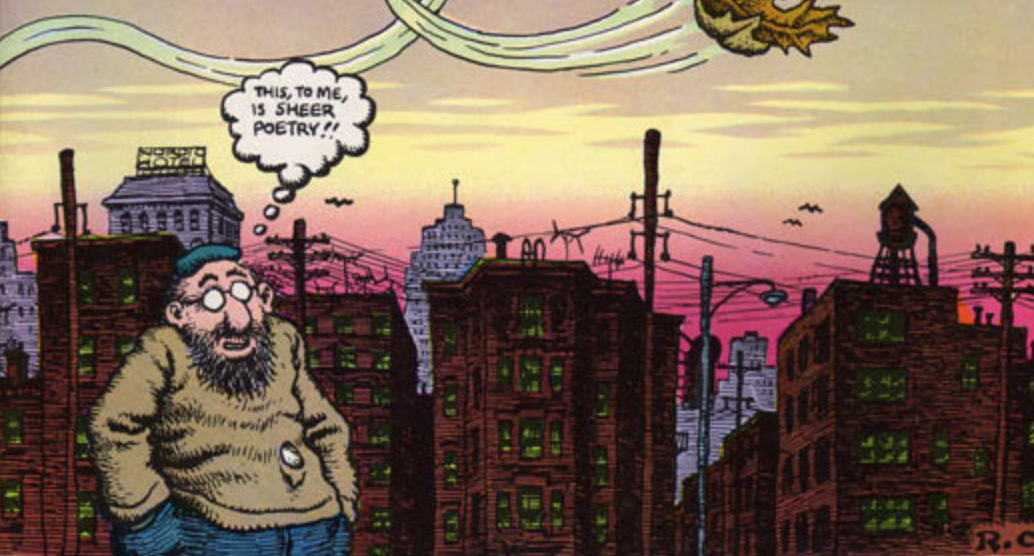
Cartoonist Glenn Head has a harrowing new graphic novel out May 25 — Chartwell Manor, a memoir about sexual and emotional abuse at a New Jersey boarding school. It’s the latest entry in a decades-long history of stark biographical or semi-autobiographical works by graphic artists.
Here are Glenn’s 13 CAN’T-MISS COMICS AUTOBIOGRAPHIES. (Needless to say, much of this column is NSFW.) — Dan
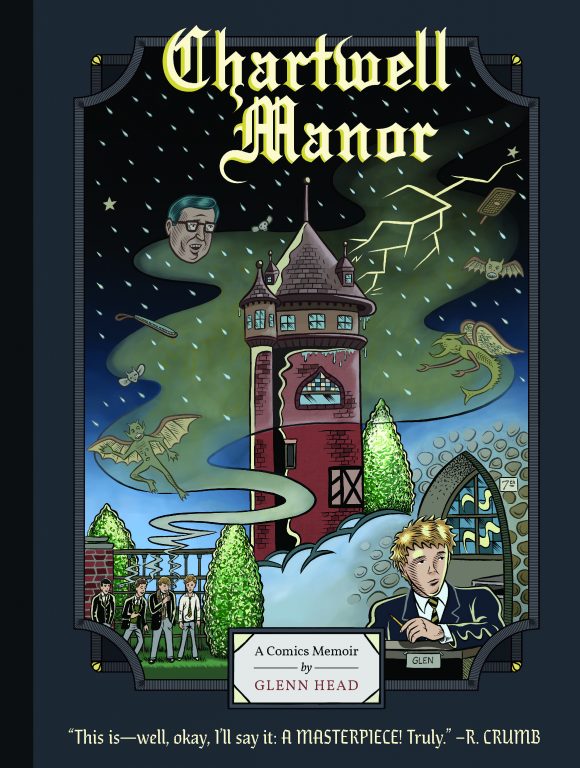
By GLENN HEAD
The comics below have been an inspiration for my own autobiographical work over the decades. What they all share is a kind of raw intensity, a feeling of lived experience, and a greater interest in truth-telling than crowd-pleasing. Humor is always present, and yet it can hurt to laugh. Even when it does, you can’t stop reading.
Autobiography announced itself early in underground/alternative comics. I think it’s this, more than anything — that willingness to present the self unvarnished — that most attracted me to the field. I’m proud to be part of this lineage, and I hope my work moves readers as these works have me.
—
Art Spiegelman, “Spiegelman Moves to New York, Feels Depressed!”, Arcade #3, 1975. A one-page 14-panel comic that shows Art at loose ends after moving into a Brooklyn apartment overrun with vermin. The squalor, loneliness, and despair in this comic show Art at his most truly vulnerable. My favorite work by him.

—
Robert Crumb, “Uncle Bob’s Mid-Life Crisis,” Weirdo #7, 1983. Domestic drudgery and the middle-age blahs make for intimate yuks as we watch Crumb and Aline’s daily struggle — for Aline to manage every aspect of their household while Crumb overcomes his self-consciousness about being the best cartoonist in the world.
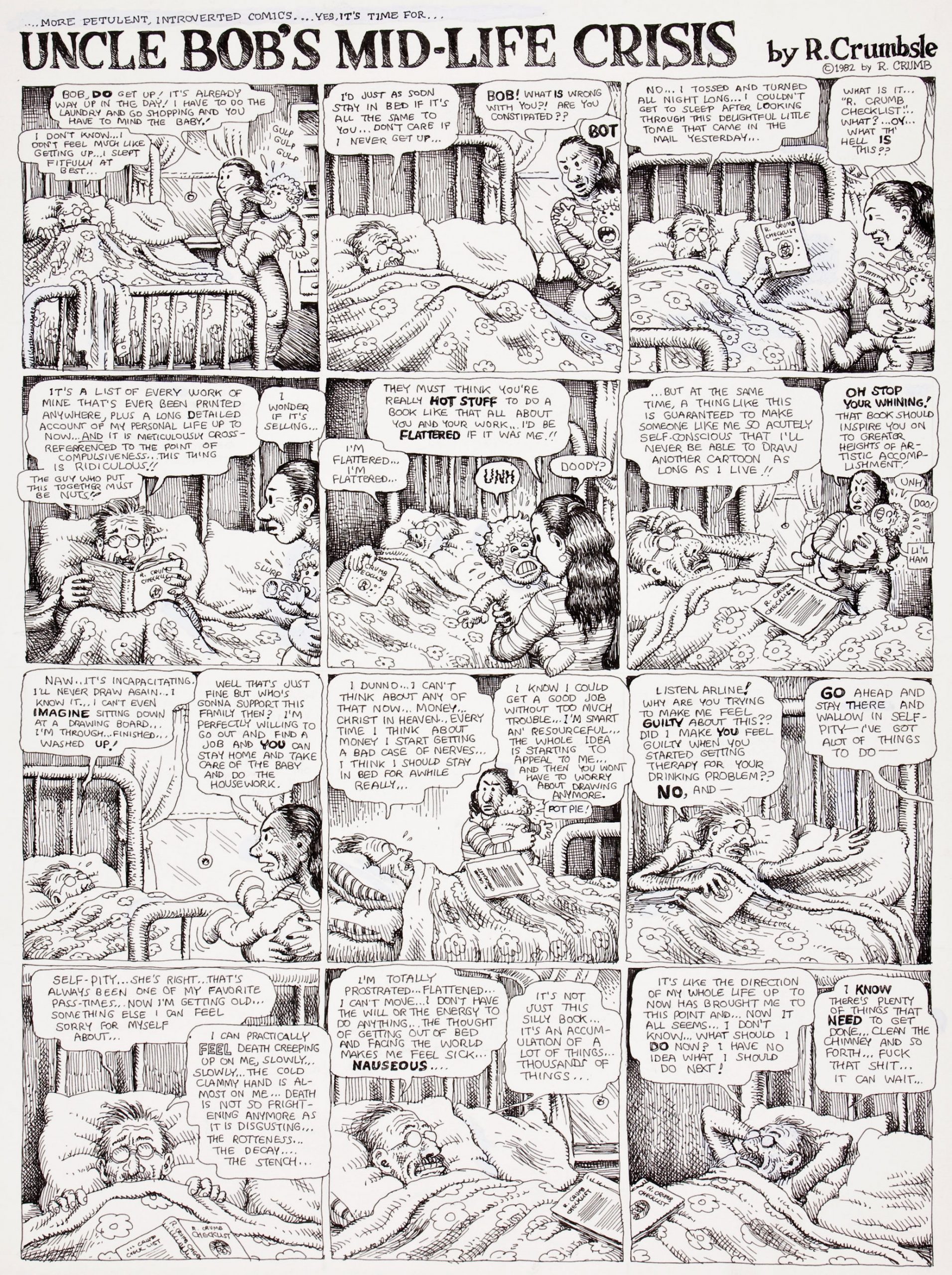
—
Art Spiegelman, Maus, 1986. The gold standard for the graphic novel. Less a straight memoir than an exploration of the roots of trauma. It became an instant classic and is unsurpassed.
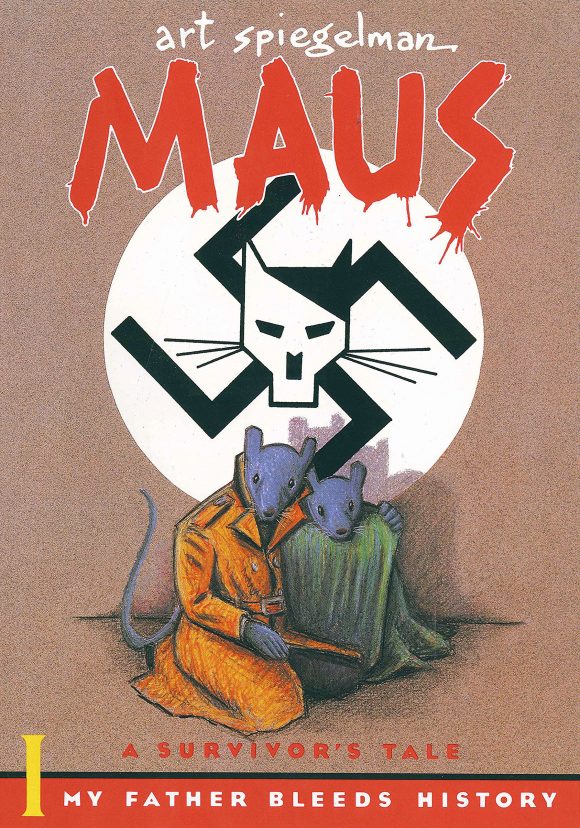
—
Peter Bagge, “The Reject,” Weirdo #10. This eight-page tale of how young boys just can’t wait to inflict damage is funny, poignant, and painful as hell. Taking a magnifying glass to this behavior, Bagge makes you feel it, as it was. Childhood hurts.
—
Aline Kominsky, “Bunch Plays with Herself,” Arcade No. 3, 1975. This crudely drawn two-page comic shows Aline eating, masturbating, smelling herself, and enjoying an afternoon in wasteful splendor. The lack of polish makes it feel warm, truthful, unself-conscious — and fun. Autobio doesn’t have to be “deep” to be great.
—
Justin Green, Binky Brown Meets the Holy Virgin Mary, 1972. Green’s epic (40 pages!) comic goes places no one had dared to, looking frankly — and hilariously — at sexuality, Catholicism, guilt and neuroses. This hasn’t dated a bit. Every time I pick it up, it makes me nervous.
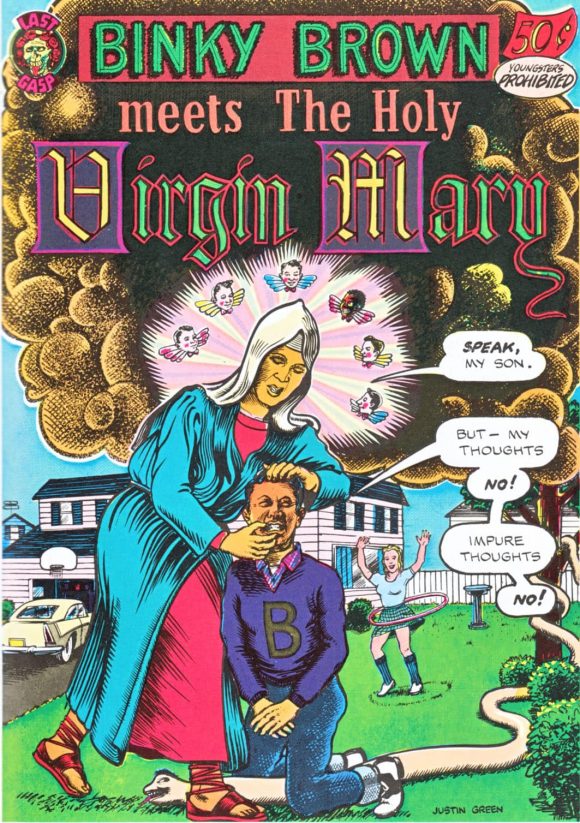
—
Rory Hayes, “Snot-Nose Harold,” Snatch Comics #3, 1969. This primitive two-page comic (drawn while Hayes was still a virgin) shows the burning, raging beast that lurks beneath male sexual desire. Sexual psychosis as autobio? Why not!
—
Mark Beyer, “Tony Target in Intense Pain!”, Dead Stories, 1982. Tony Target is a clear stand-in for Beyer, musing in the first panel of the strip, “I’ve got to take a break for awhile. Drawing is too difficult.” You feel, in the work, the focus on every last detail. The reader senses that, yeah, drawing is difficult — and likes it better for the fact.

—
Spain Rodriguez, “Dessert,” Young Lust #5, 1977. A disturbing tale by Spain of the dark side of male sexuality. Greasers in a park have sex with a gay man, and, afterwards, out of shame, assault him. Spain didn’t draw himself in the story but later admitted in an interview to being there. A strip maybe more harrowing and revealing than the artist intended.
—
R. Crumb, “I Remember the Sixties,” Weirdo #4, 1982. R. Crumb’s sixties “nostalgia” trip is anything but nostalgic. Unwashed hippies, LSD hangovers, pie-in-the-sky idealism — and for what? Crumb’s playful visual style lightens the heaviness of the text as he emerges sadder and wiser from it all.
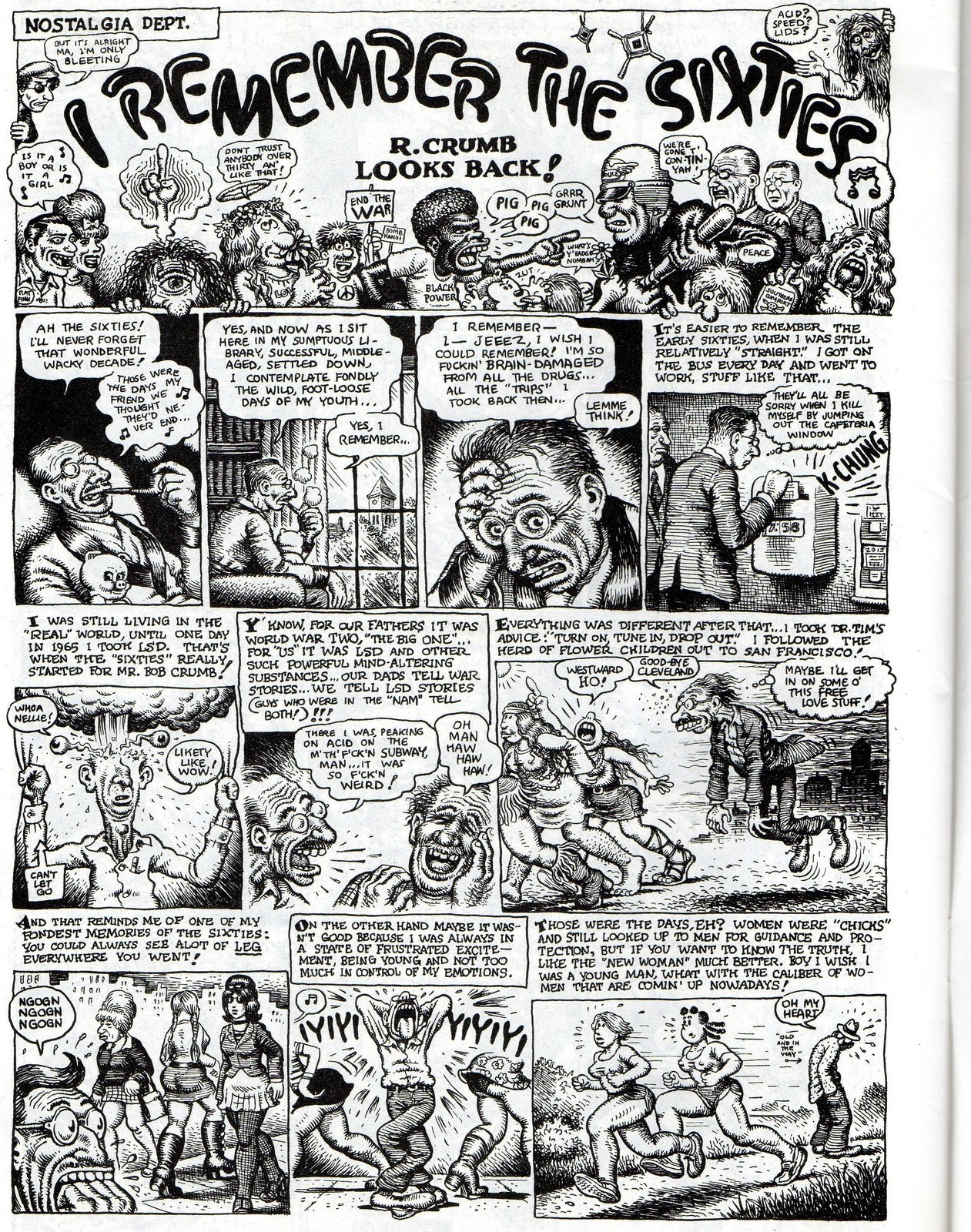
—
Bill Griffith, “Is There Life after Levittown?” Lemme Outa Here, 1978. This tale of adolescent striving for something beyond the bland suburbs has a place in my heart. That kid who wants to escape, to be an artist, to get laid, but just doesn’t know anything yet. I know that kid — it’s me.
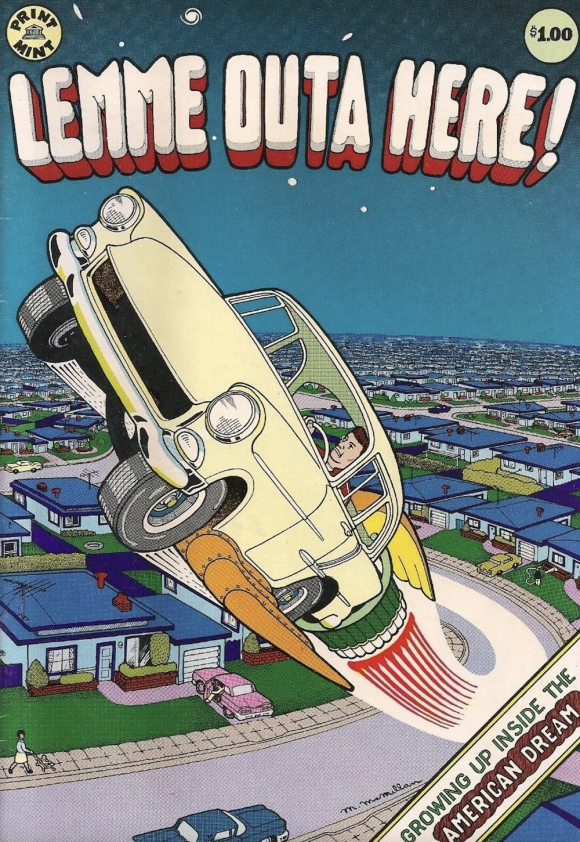
—
Kim Deitch, “Two Jews from Yonkers,” Weirdo #11, 1984. Although closer to an illustrated story than a comic strip, this is a wonderful time capsule of the late ’60s and the affecting story of siblings — Harry and Jake Simon — as they struggle to carve out lives as artists on New York’s tough Lower East Side streets.
—
Phoebe Gloeckner, Diary of a Teenage Girl, 2002. The story of a young girl’s sexual relationship with her mother’s boyfriend explores the nuances of both tenderness and rage. A disarmingly candid portrayal of a difficult topic, where even the mother’s boyfriend is too complicated to be a straight-up villain.

—
Chartwell Manor is out May 25, from Fantagraphics.
—
MORE
— 13 GREAT SKETCHES: A ROBERT CRUMB Birthday Retrospective. Click here.
